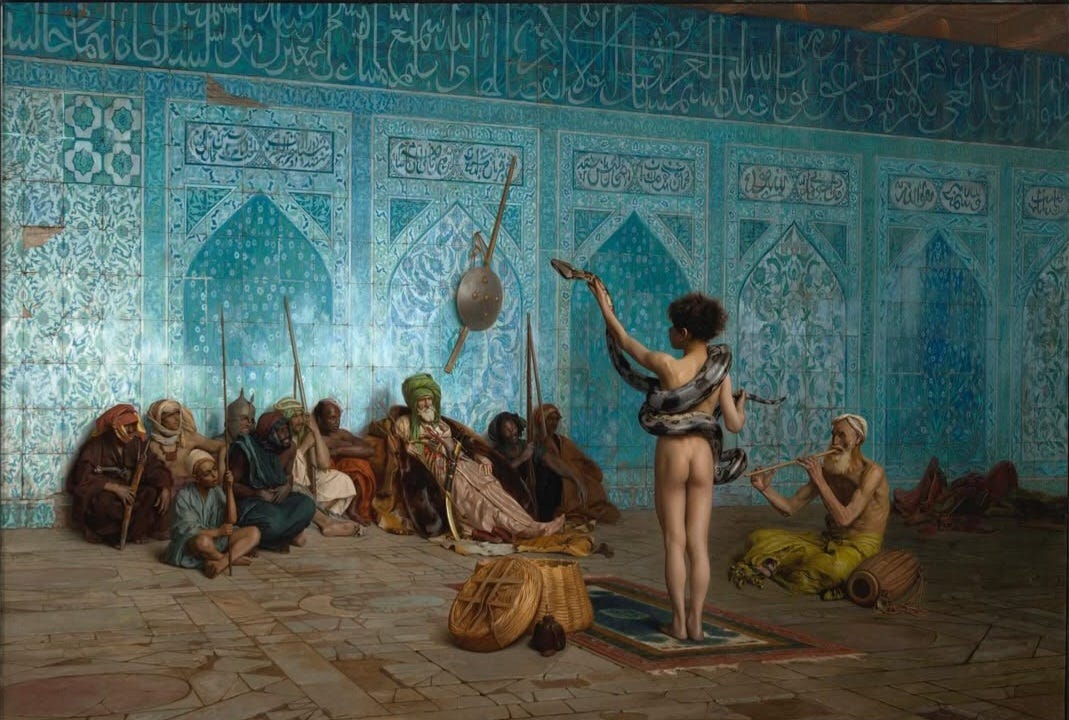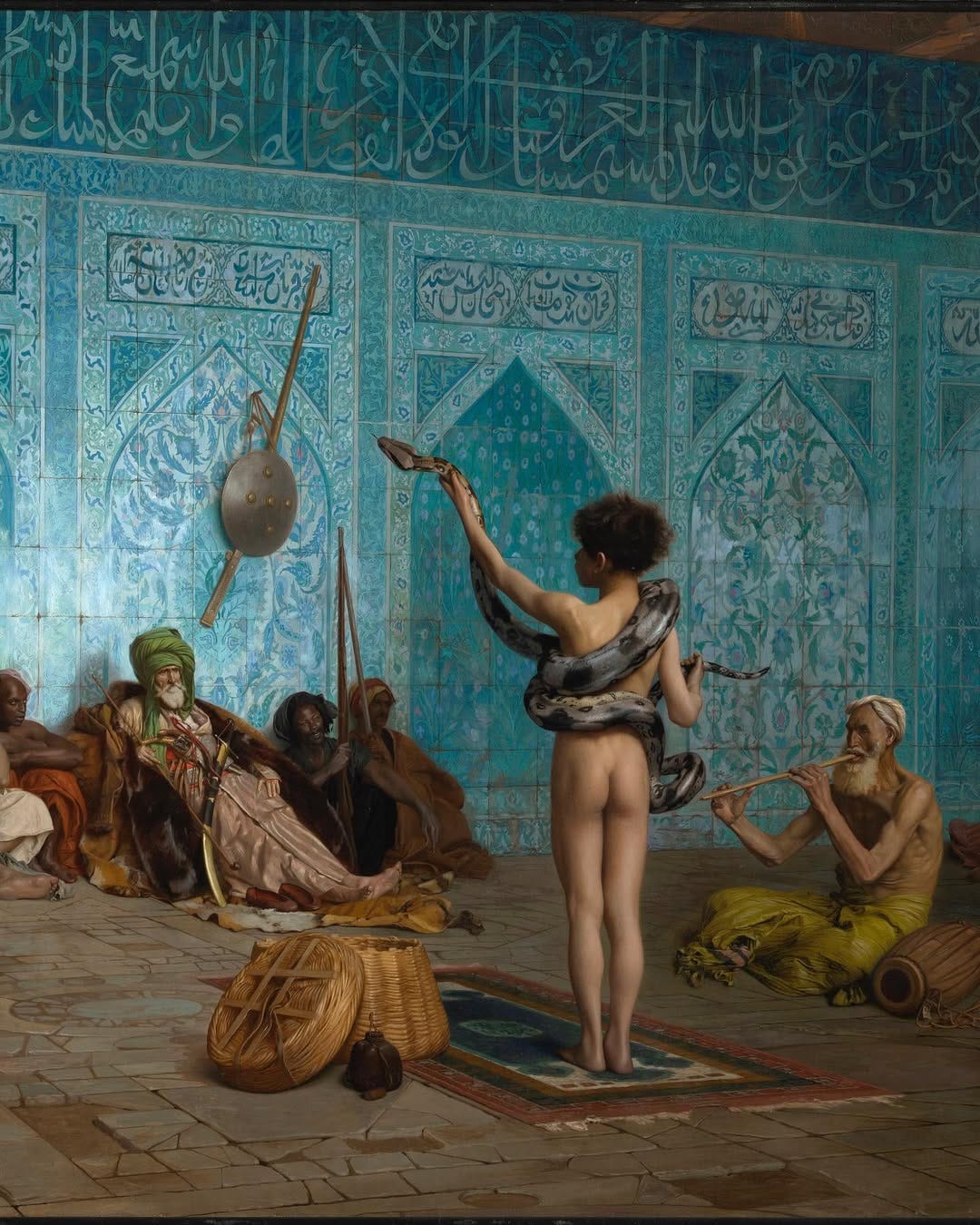JEAN-LÉON GÉRÔME - SNAKE CHARMER, 1879
This artwork exemplifies Orientalism during its peak in Western European art. Orientalism replicated the aesthetics of Middle Eastern culture. In France, Orientalism gained popularity following Napoleon’s conquest of Egypt and Syria. The French population was truly introduced to Egyptology and became captivated by all things Egyptian.
It is possible that Gérôme spotted a snake charmer while travelling in Egypt. Snake charmers occasionally removed their clothes to prove the authenticity of their act. Gérôme's photo-realistic painting features vibrant colors and intricate detail, yet it is actually a fusion of various cultural stereotypes woven into one image.
The artwork draws inspiration from various origins and blends elements of Ottoman and Egyptian cultures. The complex turquoise wall in the background is inspired by a wall adorned with Iznik tiles from the Topkapı Palace in Istanbul, Turkey. The stone floor takes inspiration from the floor in the Mosque of Amr ibn al-As in Cairo, Egypt.
The figures in the painting are also composite, and they wear garments inspired by various cultural influences from Middle Eastern and Asian nations. Even the snake itself more closely resembles a boa constrictor than a python.




